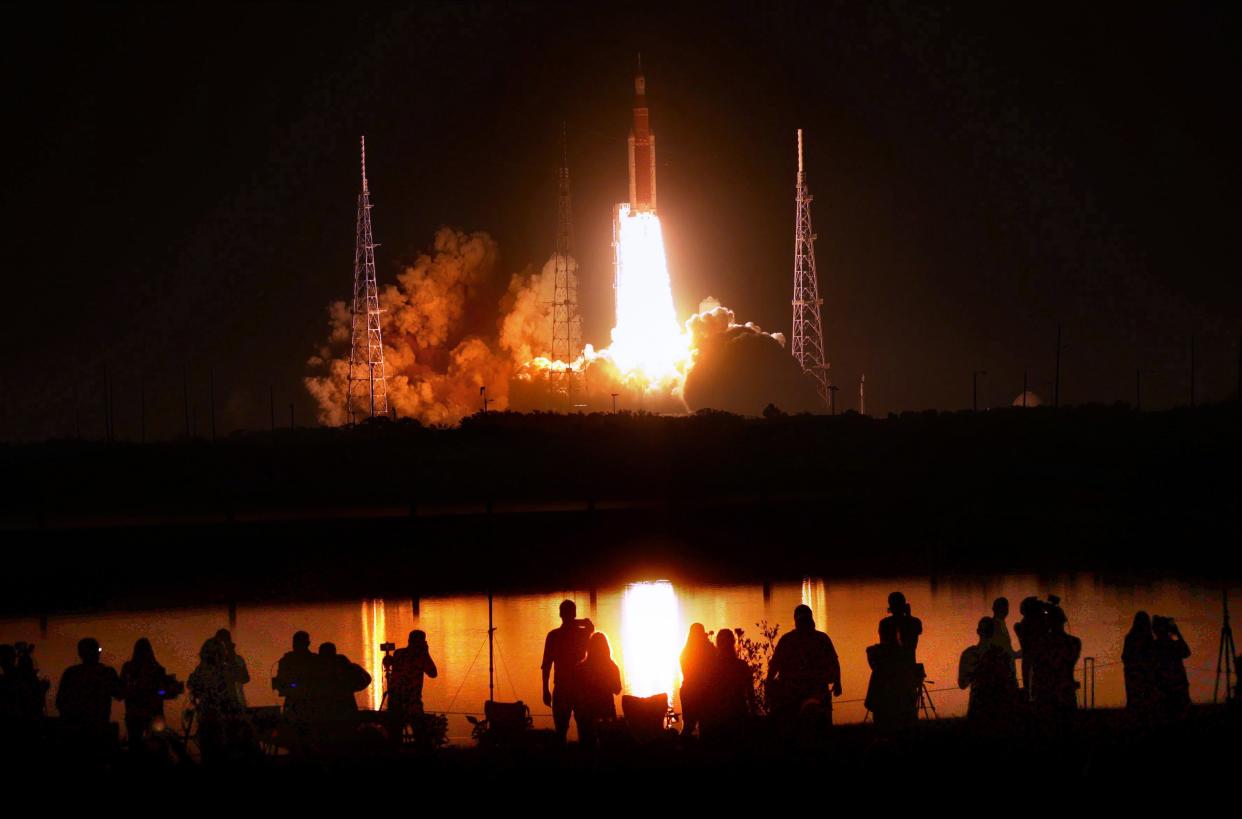New NASA budget request still kneecapped by 2-year deal in Congress

NASA’s reduced budget for fiscal year 2024 was only approved by Congress last week, and its limitations play into the Biden Administration’s ask for the next fiscal year, which was announced Monday.
While NASA had originally asked for $27.2 billion for this year, that total was shaved to just $24.9 billion by the congressional deal struck and passed more than five months into the 12-month budget cycle. The deal limits discretionary spending across the federal budget, including NASA, for both fiscal 2024 and 2025.
“It’s no secret that NASA obviously gets great and strong support from both Republicans and Democrats,” said NASA Administrator Bill Nelson during his annual State of NASA speech from Washington. “We are as I say, not only bipartisan, we are nonpartisan. But what happened last year was this small group in the House of Representatives held up the passage (of a bill to avoid defaulting on national debt) in order to get their way to have lower spending.”
The 2024 funds ended up being about 2% less than what NASA was allocated in 2023, and the first time since 2013 that Congress didn’t increase NASA’s funding from the previous year.
The 2025 budget request for NASA, limited with the congressional deal in play, calls for just $25.4 billion, which is still $500 million more and a 2% increase from 2024.
“Of all the deals that we could have gotten during the two years of the capped budgets, this is a good one,” Nelson said. “NASA fared better than other agencies and departments.”
He also noted the proposed 2025 budget is still 9% higher than what NASA was funded at through the end of the Trump Administration. It remains less than 0.5% of overall federal spending.
One thing that isn’t taking a hit is NASA’s moon-to-Mars efforts, including support for the next three Artemis missions, taking over the highest line item among all of NASA’s mission directorates. It seeks more than $7.6 billion, up more than $150 million from 2023 and 2024’s budgets.
Artemis II is still on track to fly with humans around the moon by September 2025 and Artemis III aims to partner with SpaceX to bring humans including the first woman to the moon’s surface targeting September 2026. The program also funds new spacesuits and a second lunar lander partner Blue Origin for future Artemis missions, although its first mission, Artemis V, has now been pushed from 2029 to 2030.
The big hit to the budget comes from the Science Mission Directorate, with a request of just less than $7.6 billion, which is already $230 million less than what it had to work with in 2023.
Of that total, the planetary science division has a cap of $2.7 billion. Just where that money is allocated depends on a review of the Mars Sample Return mission, which has seen ballooning cost estimates and already led to more than 500 layoffs at NASA’s Jet Propulsion Laboratory earlier this year under the congressional budget cut threat. In the end, Congress gave NASA the choice to fund the mission within a range of at least $300 million, but as much as $949 million.
NASA’s Nicky Fox, head of the Science Mission Directorate said the review will lead to NASA’s decision expected next month on how much the Mars mission will actually be funded for both 2024 and 2025. But no matter what the Mars mission gets, the overall planetary science budget cannot increase.
“We’ll have to make some pretty tough choices,” she said. “Obviously we have to maintain a balanced portfolio overall.”
For now, NASA has set aside funding to support summer 2028 launch targets for both the Near-Earth Object (NEO) Surveyor and Dragonfly rotorcraft mission to Saturn’s moon Titan. That has meant delaying new potential mission announcements such as New Frontiers until at least 2026. Within astrophysics NASA has reduced the Explorer Future missions budget as well, so it’s skipping over any Missions of Opportunity announcements until after 2025.
Support for the Hubble and Chandra observatories will take a budget hit as well. Within heliophysics, NASA wants to kill the Geospace Dynamics Constellation mission.
Among other sections of NASA, Space Operations, which includes support of the International Space Station, is asking for just under $4.4 billion, nearly $150 million more than 2023 and 2024.
Space Technology remains about the same just under $1.2 billion. Already killed in the 2024 budget was the On-orbit Servicing, Assembly, and Manufacturing (OSAM-1) project. The 2025 budget looks to carve out Space Nuclear Propulsion Technology, which will be needed to support quicker missions to Mars, as a standalone program.
Aeronautics, including progress on the new X-59 supersonic craft to reduce sonic booms, increases slightly from $935 million to $965 million.
For NASA’s aging infrastructure, the budget holds at about $425 million, including $33 million set aside for Kennedy Space Center’s support of the Space Launch System rocket launches for the Artemis program. Apart from that and across all of NASA’s facilities, it looks to spend $293 million for repairs and construction.
“We know that there’s always a tremendous return on NASA investment,” Nelson said. “We’ve seen that ripple throughout not only the American economy but also for the betterment of people around the world. In almost every discipline — science, technology, aeronautics, medicine — the whole bit. Bottom line, the American economy is boosted.”

